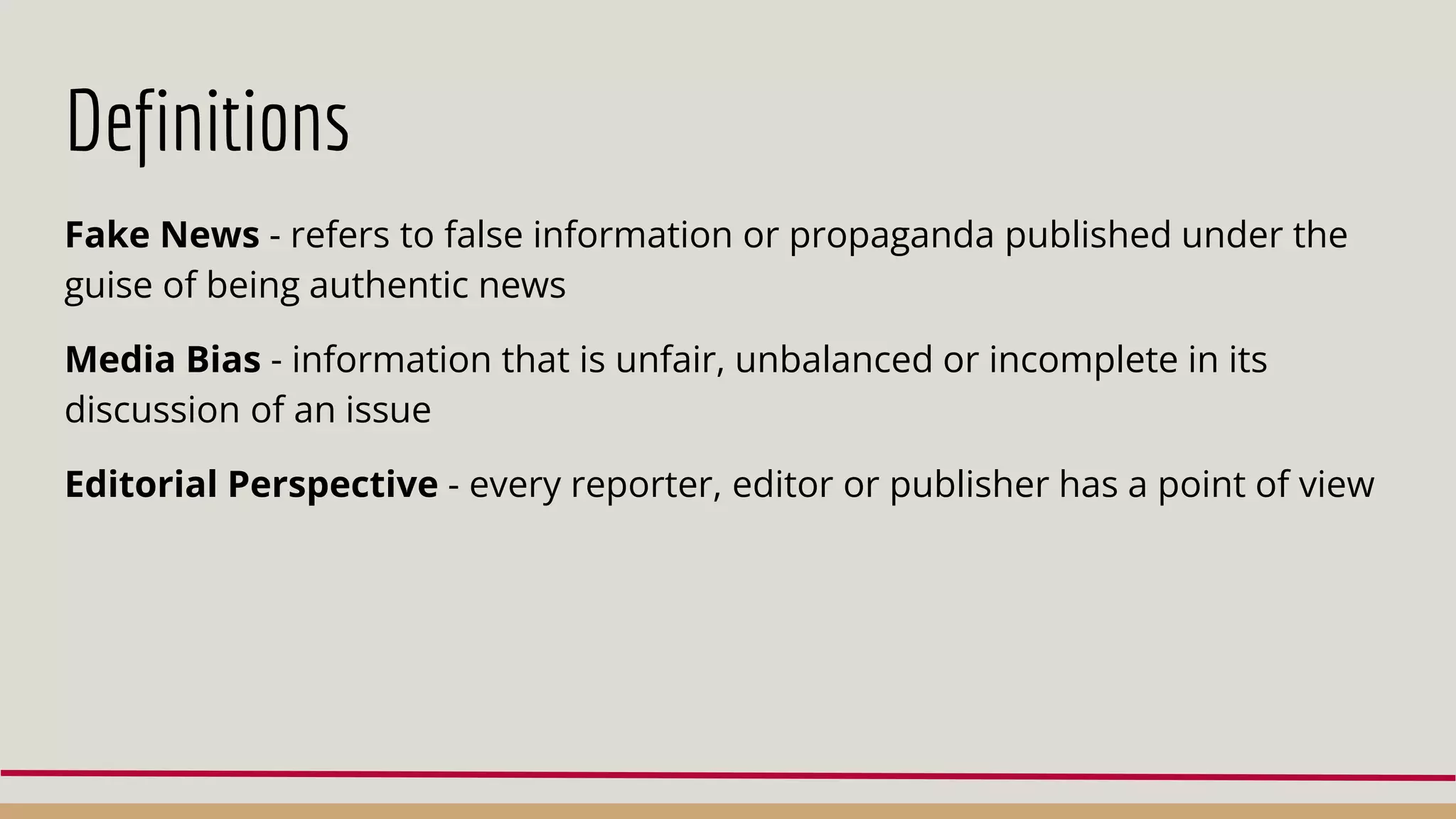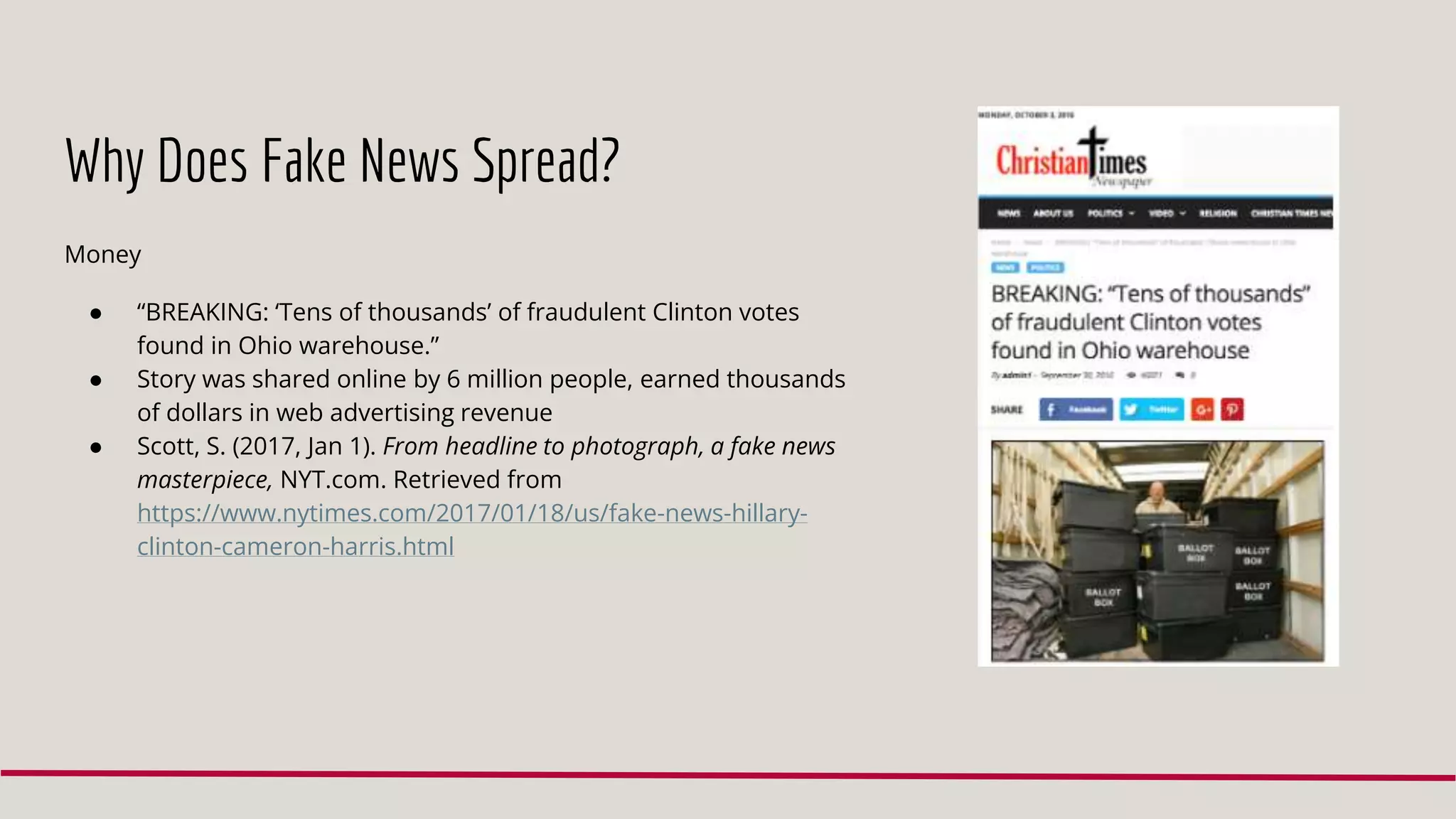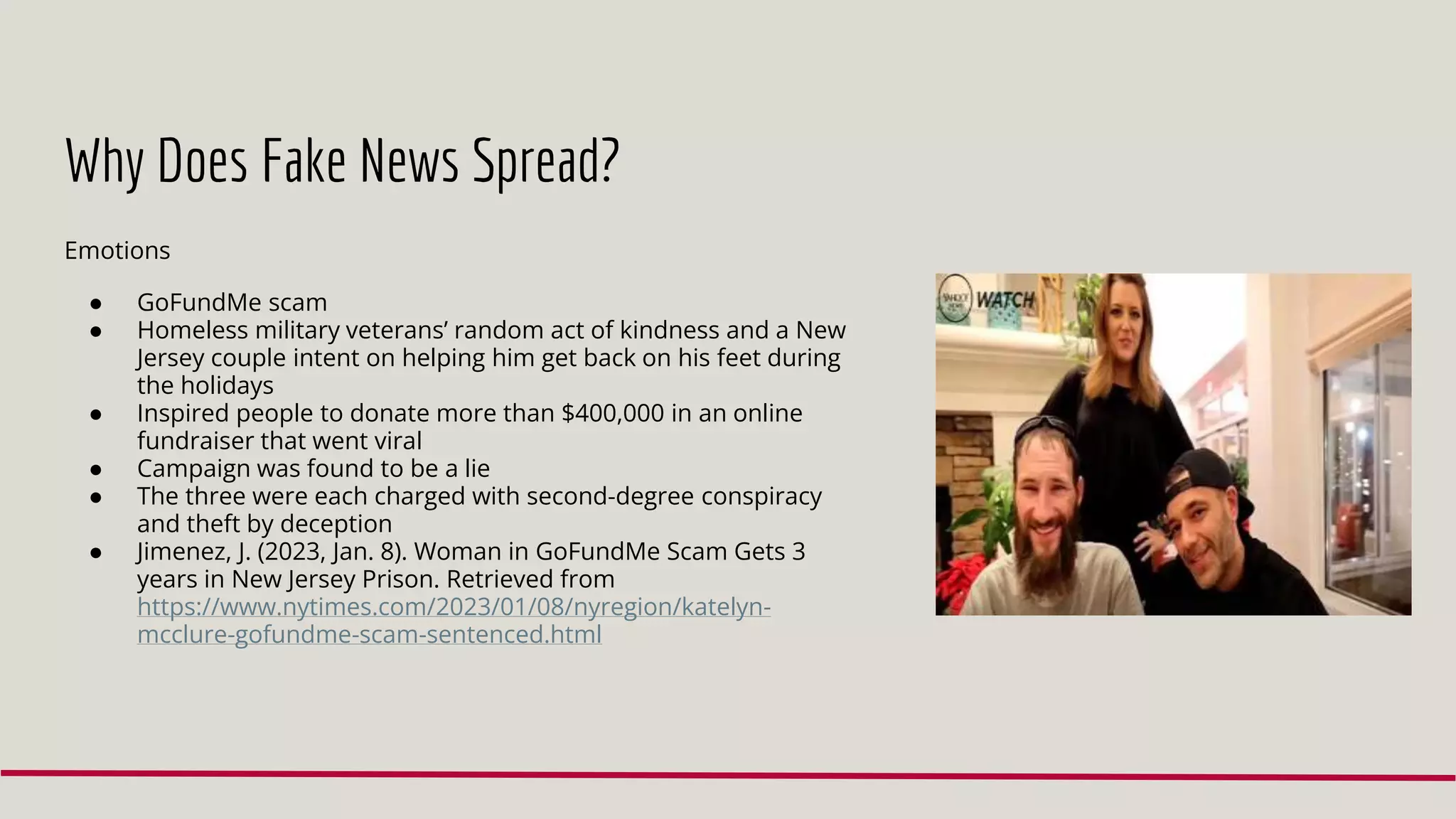This document defines and discusses fake news, media bias, and editorial perspectives. It provides examples of characteristics that identify fake news stories and explains how fake news spreads for financial and emotional reasons. The document also discusses how images and headlines can be fabricated or misleading. It includes activities for identifying media bias and creating fake news headlines. Finally, it provides tips for thoughtfully evaluating information and identifies fact-checking resources.


















